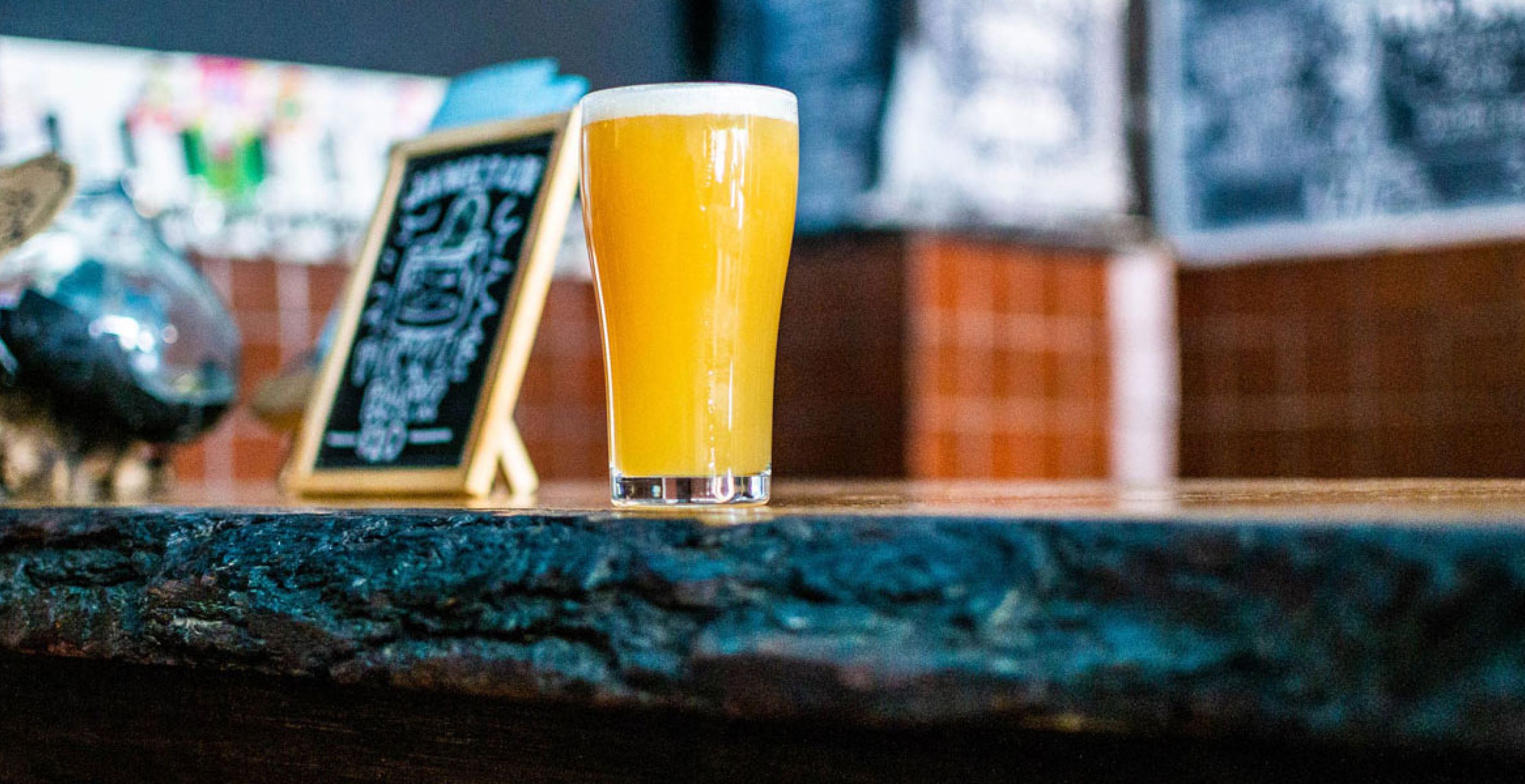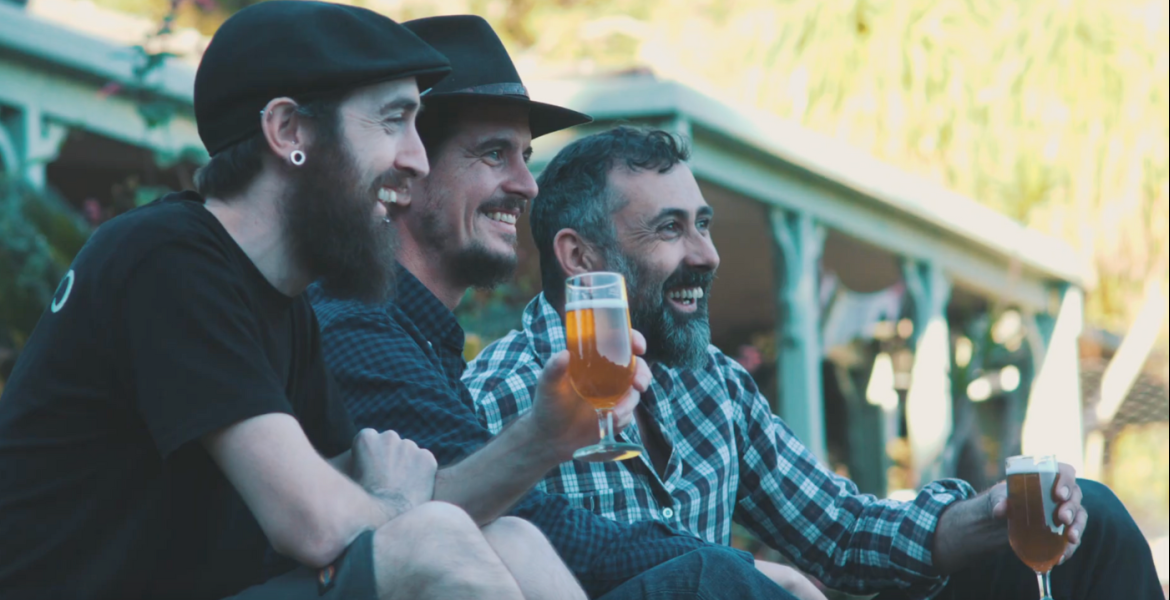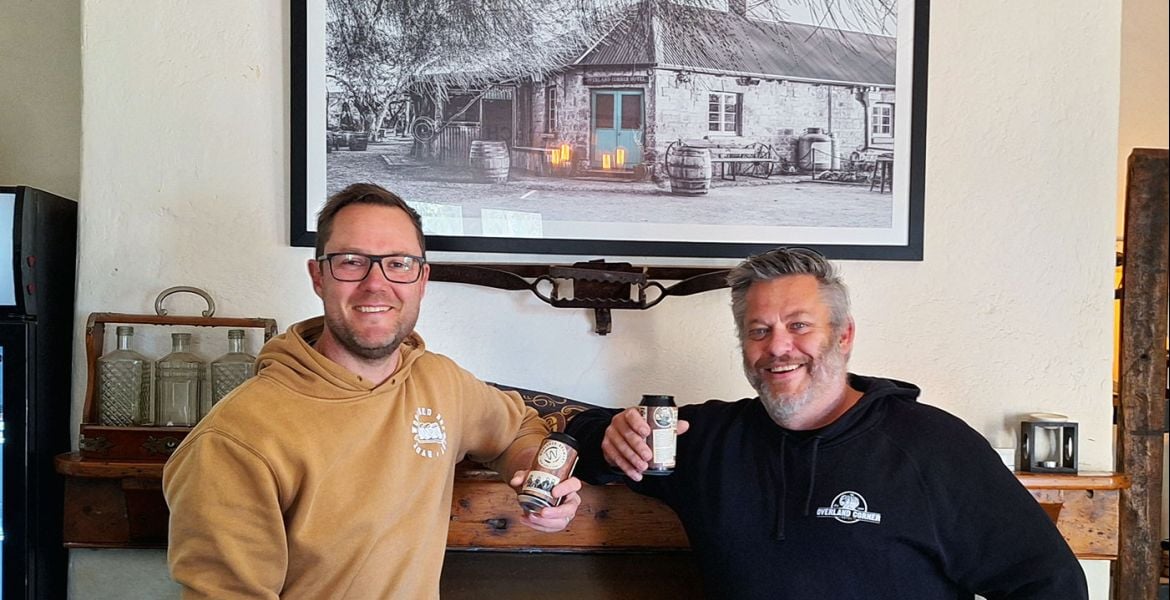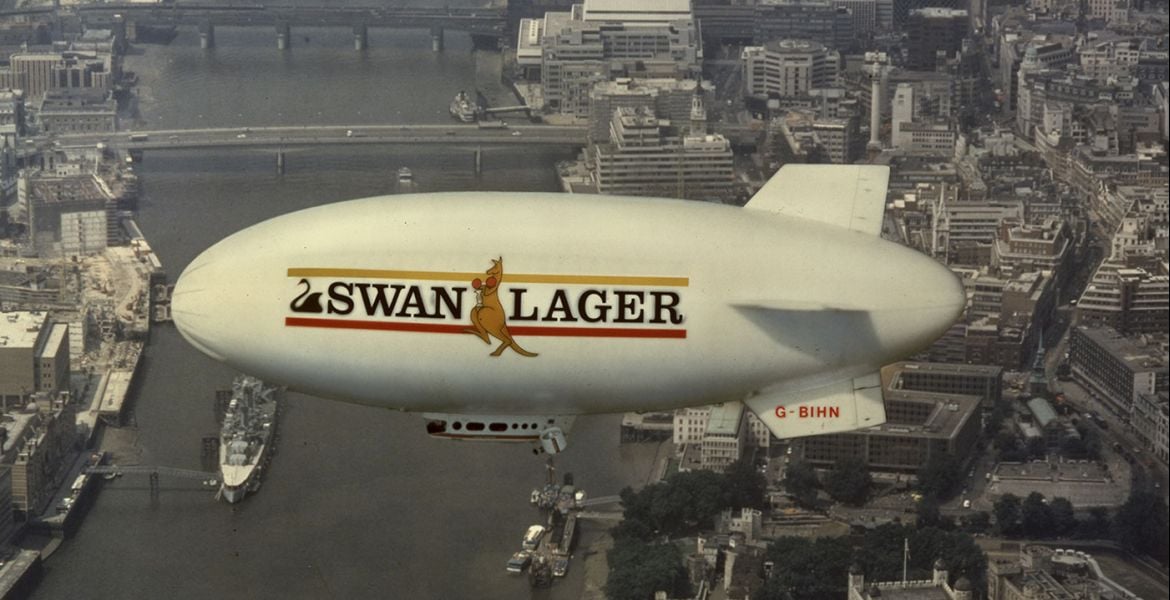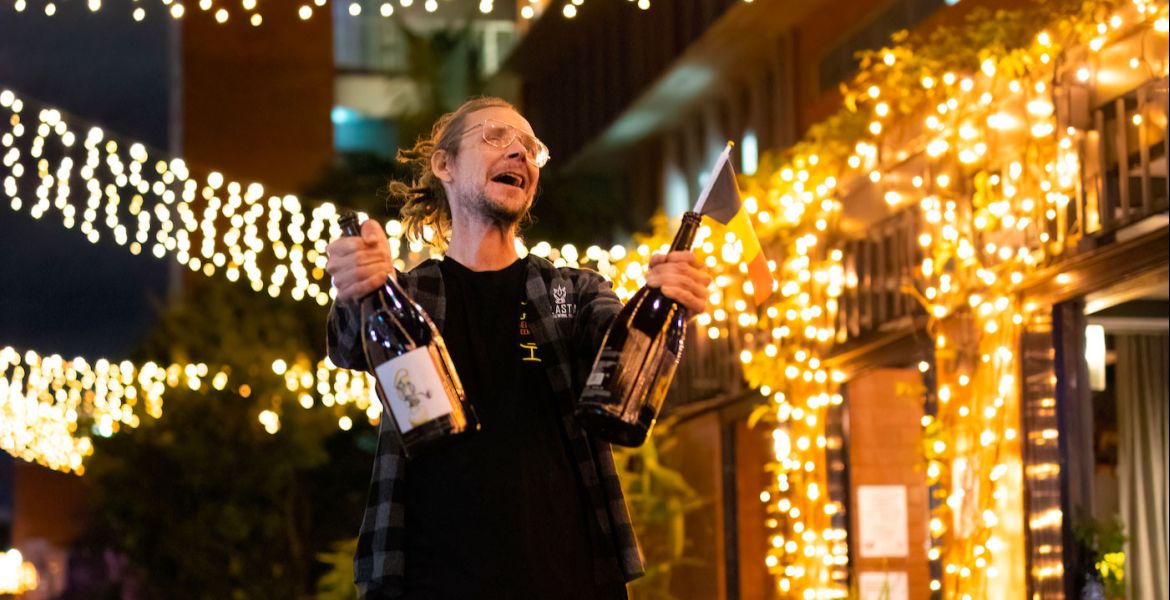What makes a great boozer great?
In this unique series, award-winning beer writer and podcaster Luke Robertson of Ale of a Time sets out to discover the answer, breaking down the experience of going out in Australia.
In part one, he opened the book on doors.
Here, Luke heads to the bar.
Maybe you're glad to have found a hook underneath to hang your bag, to be meeting complete strangers, chatting to the staff, or quietly reading a book. Because when you're in a pub, sitting at the bar isn’t like sitting at a table, or a booth, or even in the beer garden.
Sitting at the bar is where things happen.
Before we go any further and so we are all on the same page: for this story, when we are talking about a bar it’s the flat surface where the drinks are passed over, right down to the rail at your feet. It’s not behind the bar and it doesn’t go as far as the stools (both articles for another time). It’s also not the venue itself, which may be referred to as a bar, but not for the purposes of this story.
OK, with everyone on the same page, let's get cracking...
A Brief History of Bars

If we start at the rail by our feet, I can’t help but remember the pubs I grew up around in rural New Zealand. It usually wasn't a rail at the base, but a gutter for flicking ash (and, yeah, people sometimes peed in them). In parts of the USA, the gutters once had water in them to transport spittoon-spit away. These were known as Fresh Flow Through Spittoons.
On a more inspiring note, the rail played an important part of Australian bar history. In 1965, Merle Thornton (Sigrid’s mum) and friend Rosalie Bogner chained themselves to one to protest women being banned from public bars. (Laws changed in 1969 for Queensland, where they were protesting, but it took until the mid-70s for women to be allowed in public bars across the country).
The physical act of chaining themselves to the bar was about more than just wanting a lemonade (their order at the time) at the pub. They did it in the late afternoon, before the evening news, across the road from the ABC office.
This piece from Contact Magazine explains that, “it wasn’t that she [Merle] believed being banned from public bars was the most important issue of discrimination against women at the time. Unequal pay and women being forced to resign from the public service upon marriage were of much more consequence. But she did think it was something she could ‘make a quick impact on.’”
Looking far further back, we know bars have existed for at least 2,000 years. There’s still a very intact bar and restaurant in Pompeii which includes inset holes for wine filled amphora. Inset amphorae (sadly) appear to have been lost to history and in their place we often find the far less exciting bar mats or bar towels.
With the help of Keith Bennett, president of the Australian Beer Can Collectors Australia, we believe it was around the 1960s when bar towels started appearing in Australia. Looking through photos on the National Archive, the earliest we can find showing cloth bar runners on the bar, rather than hanging out of pockets, dates from 1963.
Creating a Centrepiece

Having a good physical bar was the first thing Gavin Spencer, owner of The Woolhouse in Albury, made sure of, before he even had a pub to put it in.
Visitors to the pub will notice a rough edge and an epoxy-filled smooth top. It’s made from blue spruce pine, and Gavin found it with the help of Fallen Timber Furniture Company in Milawa. It was recovered from a tree felled in Melbourne in the 1980s that was too close to power lines.
“He had three slabs of this beautiful blue spruce lying round. It’s the entire width of the tree. I was very glad that I was able to keep the bark on one side of it the whole way round.”
That piece of bark is important, Gavin adds: “It shows that this isn’t just a bit of timber I’ve bought from Bunnings. It’s a bit of wood with a story behind it.”
My local, Bar Josephine in Footscray, has a bark edge (pictured at top of article). The top has rough saw marks. It’s textural and real. The owner, Aaron Donato, was on site when it was milled in Melbourne suburbs. He dried it out in the bar, and varnished it for seven days. Even in the depths of lockdown, I could tell you exactly how it felt. In part, that tactile memory prompted this series.
However, rough isn’t the only texture we want to run our fingers over.

In the Sydney suburb of Redfern, you’ll find Atomic Beer Project. Its bar couldn’t be smoother. It’s bright green (they call it “hop green”), made from volcanic glazed lava called Pyrolave. Clint O’Hanlon, Atomic Beer brand lead, tells me it’s made up of 1.5 to 2m slabs, and assembled into the 15m long bar.
“It’s pretty striking. It’s definitely a real centrepiece in the bar. Anywhere you stand in the venue you can see it,” he says.
The smooth, bright green slab has a curved edge that, as we talk, Clint realises he regularly runs his hands over, absent-mindedly, like a kid walking up a staircase. Something he notices staff and customers do too.
“I guess [I’m] checking for stickiness but I also find it comforting. It’s nice, soft, [and] round, while a lot of bar corners are a chamfered [right angle] edge on timber.”
A relatively short drive north in Brookvale is 4 Pines’ Truck Bar and it’s exactly as the name suggests: the bar is made from a 1957 Dodge Truck. The team have extended the concept outside of the venue and into festivals and private functions by repurposing old trucks, including an old Bedford, into mobile versions of the original.

Brand manager Tom Baldwin says it's a move that created unexpected interactions. Rather than just a trestle table with an esky, the flatbed of an old truck sparked something in the customers.
“I was a little bit surprised about how emotional old fellas get over Bedfords,” Tom says. “Every guy over 60 had a story about a Bedford. They got really nostalgic. Without exaggerating, some of them teared up over it.”
Next time you’re at your local, take a look at the bar, run your hand over it. Even if it’s a piece of wood, bought from a hardware store, it’s still the place where connections are made, drinks are spilled and stories are told. All of these moments create something bigger than the sum of its parts, explains Gavin.
“Those small things, whether it’s the physical or general feel of the place, is the experience you can’t get by just opening a can or bottle and pouring it in a glass home.”
You can check out part one of this series here and look out for part three, which will focus on seats.
What's more, do you have a favourite bar top (or bottom), or fond memories attached to any? If so, drop Luke a line.



